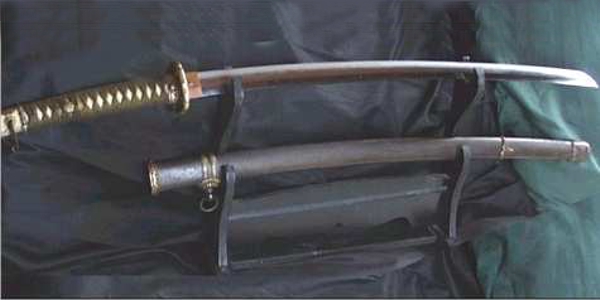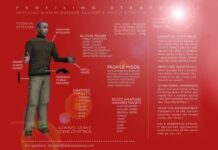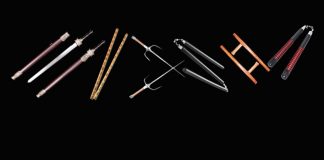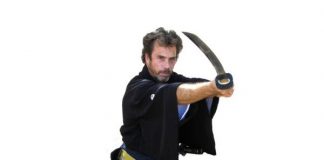The number one question you need to decide is, “What do you want the sword for?” Do you want to use it for a sword art, such as cutting or drawing, or do you want to own an antique as an investment?
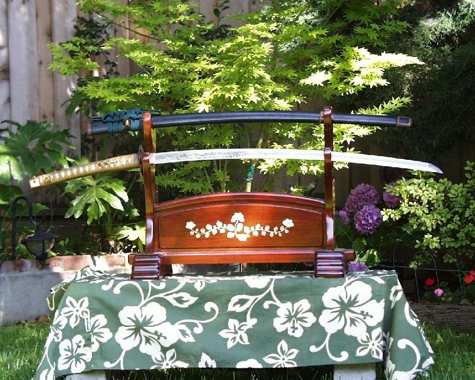
For cutting, a cheaper blade is recommended, especially at first. “Cheaper” is of course a relative term. It is very unusual to find and outfit a good cutting blade for less than $1000. As with anything else, while we are learning, we tend to make mistakes so we don’t want to lose too much of our investment if we mishandle the blade. I’m speaking as someone who has been through the learning process. After we reach proficiency in drawing and cutting, then we can upgrade to a more expensive sword.
Places to get a sword: eBay, gunshows, private dealers, antique and pawn shops, garage sales (very seldom), flea markets, public sword websites, antique dealers’ private auctions, sometimes heirlooms of friends and family.
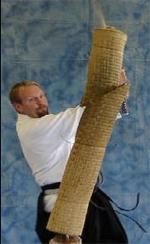 A little about eBay: There are very few great bargains on eBay. The price is set for the seller to make money; that’s what eBay is for. Beware of swords from China, Shanghai, or Hong Kong, and even Australia. There are a lot of reproduction knock-offs for sale and that goes as well for sword furniture. If the seller is not reputable, there is no way to get your money back. To play it safe, it is best to buy only within the U.S. Other safe sources are Japan, Canada, and Europe. There are a number of fraudulent practices in online auctions. Always check the feedback on the seller. References are very important. Make sure there are a lot of positive entries in the feedback and check out any negatives. On negative feedbacks, it is a good idea to email the reviewer and get their side of the story. If you see a blade you like, engage the seller in email correspondence. Ask lots of questions and get accurate information on all the details. On major investments, work out an inspection period with the seller.
A little about eBay: There are very few great bargains on eBay. The price is set for the seller to make money; that’s what eBay is for. Beware of swords from China, Shanghai, or Hong Kong, and even Australia. There are a lot of reproduction knock-offs for sale and that goes as well for sword furniture. If the seller is not reputable, there is no way to get your money back. To play it safe, it is best to buy only within the U.S. Other safe sources are Japan, Canada, and Europe. There are a number of fraudulent practices in online auctions. Always check the feedback on the seller. References are very important. Make sure there are a lot of positive entries in the feedback and check out any negatives. On negative feedbacks, it is a good idea to email the reviewer and get their side of the story. If you see a blade you like, engage the seller in email correspondence. Ask lots of questions and get accurate information on all the details. On major investments, work out an inspection period with the seller.
Now let’s talk about good deals. How do you spot a good deal? Good deals come when people are naïve about what they have. A blade that is osuriage (shortened) and mumei (without signature) may be valuable but it takes an expert to recognize it. For example, I once bought a nagamaki naoshi for $660 (a nagamaki was a sword-like weapon attached to a staff about 4 feet long) that was sold as a wakizashi (sidearm short sword). The blade was osuriage and the signature of the swordsmith was lost due to the shortening of the blade. The sword turned out to be a 650 year old koto blade of a well respected smith and is now one of the best blades in my collection. Just because a blade is shortened, doesn’t mean it is low quality. On the other hand, if a blade is signed, it doesn’t always mean it is a good quality blade. 70% of the highranking swordsmiths’ signatures are forgeries.
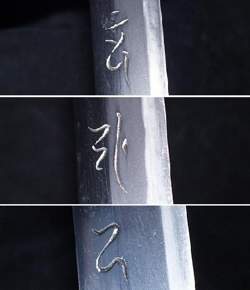 Another way to spot a good piece: a sword that way to spot a good piece: a sword that is having a lot of bids and the people bidding are reputable buyers. You can take advantage of the fact that they have done their research. The down side is that they can be very difficult to outbid. If it’s a good piece, there is no amount of money that a collector will not spend. In general, beware of swords that no one bids on, or the people who bid are low-end bidders. Another way to find value is in the furniture (fittings) on the sword. The furniture can be worth more than the blade. Many times, people buy beat-up swords to get the furniture. Complete furniture sets are called godoka, and can be very valuable if they are in good condition. A complete set consists of fuchi, kashira, 2 menuki, and tsuba.
Another way to spot a good piece: a sword that way to spot a good piece: a sword that is having a lot of bids and the people bidding are reputable buyers. You can take advantage of the fact that they have done their research. The down side is that they can be very difficult to outbid. If it’s a good piece, there is no amount of money that a collector will not spend. In general, beware of swords that no one bids on, or the people who bid are low-end bidders. Another way to find value is in the furniture (fittings) on the sword. The furniture can be worth more than the blade. Many times, people buy beat-up swords to get the furniture. Complete furniture sets are called godoka, and can be very valuable if they are in good condition. A complete set consists of fuchi, kashira, 2 menuki, and tsuba.
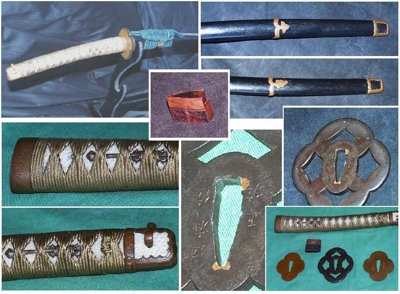
If you want to invest in an antique, a traditional Samurai sword is a wonderful piece of history. The price of these blades fluctuates, like any market. Right now, the market is pretty low and there are some valuable swords being sold at very reasonable prices. The better quality the sword, the better the investment. So it is important to know something about Japanese swords. Before you buy a sword, you have to do a lot of research. Japanese sword study is a very large field and you have to understand a lot of elements. Even so, it is a good idea not to rely on your own research. It is critically important to get expert advice before investing in an expensive sword. Sometimes the smallest detail can make a big difference in the value of a blade.
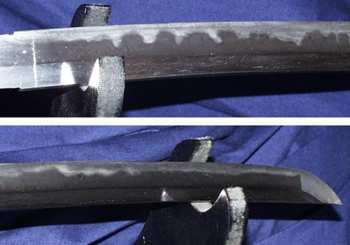
We will go into that in How to Buy a Sword Part Two. By Shihan Russ Rhodes

